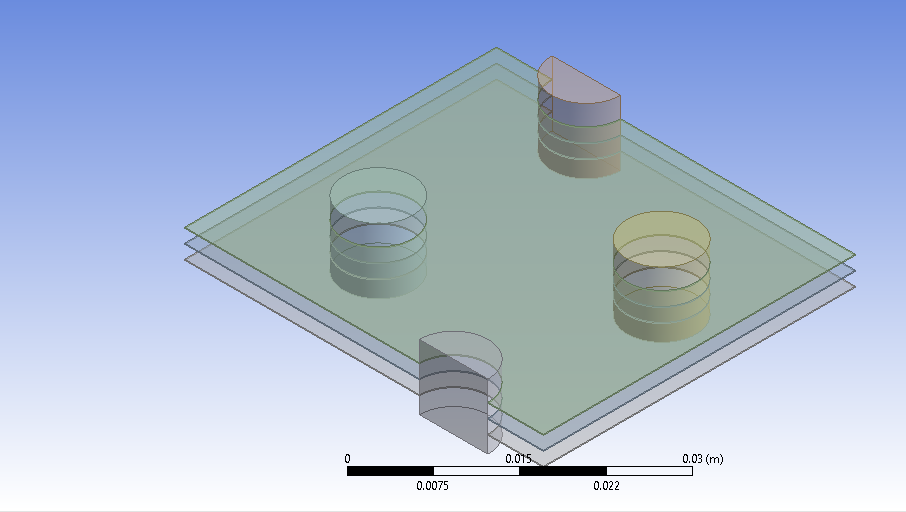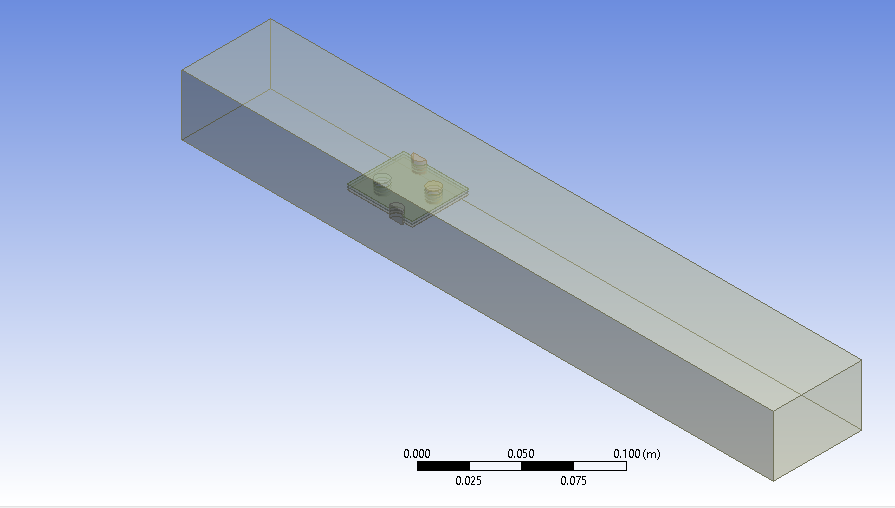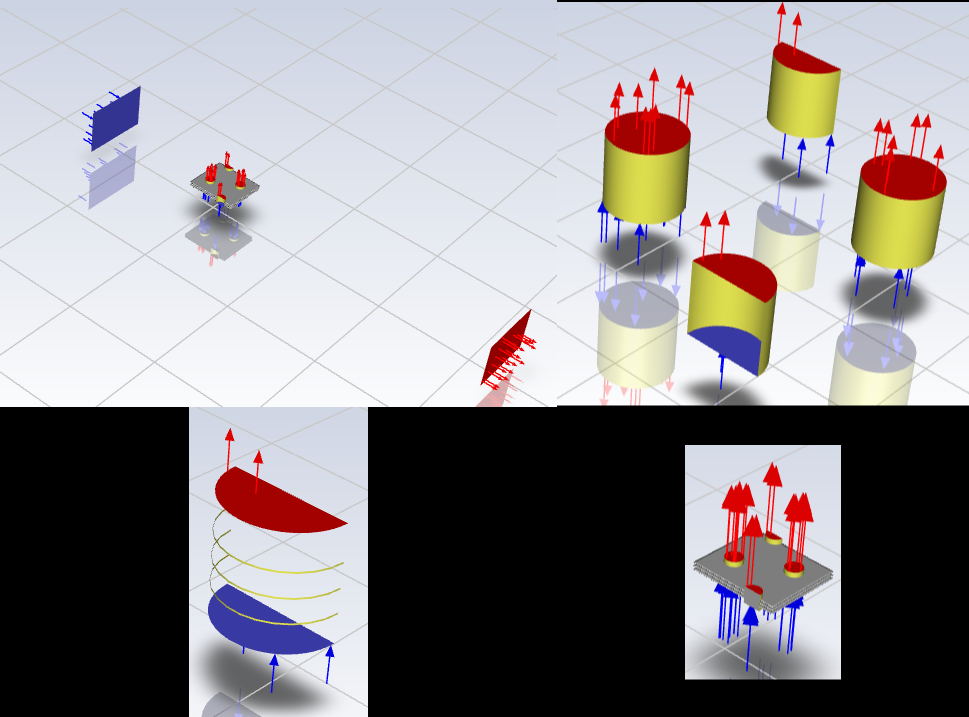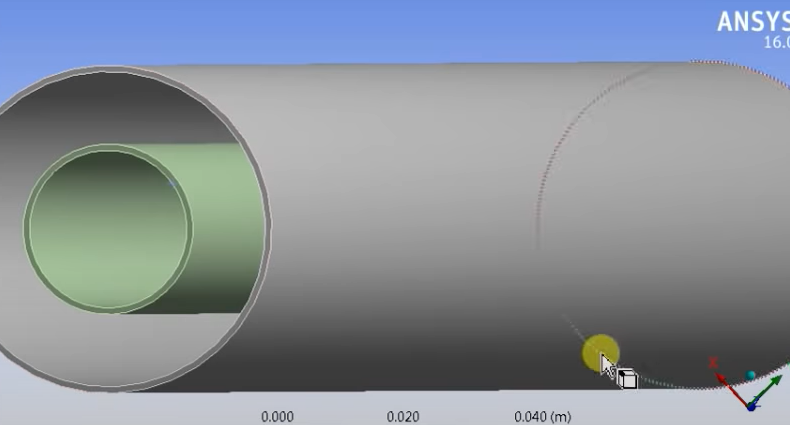-
-
July 1, 2021 at 7:32 pm
mounaraha
SubscriberI have an interface between a fluid circulating in an inner pipe and a phase change material circulating in outer pipe (it will be transformed from liquid to solid phase during the simulation by cooling it with the fluid of the inner pipe), can i ignore the thickness of the inner pipe to reduce meshing and put a shell conduction or this option of shell conduction is only used for fluid/solid interface and when the phase change material goes to solid so there will be solid/solid interface it wouldn't work ).
Or can i just add a wall thickness without meshing or i should mesh it explicitly and make a coupled wall boundary condition in each of these two interfaces (fluid and inner wall of the inner wall /phase change material and outer wall of the inner wall).
another question, for the shell conduction, i read that i should have a conformal interface so that i can use it. Someone to confirm that please
thank you
July 2, 2021 at 3:29 pmRob
Forum ModeratorThe shell conduction is valid if there is a wall. Does the phase change material come into contact with the fluid in the middle?
July 2, 2021 at 3:38 pmmounaraha
SubscriberThank you Rob. In my real system, there is a copper inner pipe body with a thickness of 1mm, so the heat would be absorbed from the phase change material (so that it will solidify) through this copper inner pipe and after through the fluid domain. I'm confused if i mesh this copper inner pipe as in the image and i will have 2 interfaces soli/fluid and solid/pcm or i just ignore it and i put an inner pipe with zero thickness with shell conduction and i have one interface. I don,t know if the second approach works or not. need help for that
February 15, 2022 at 5:50 amnikhil_98
Subscriber
 In the above geometry, how to define an interface?
In the above geometry, how to define an interface?
In my Geometry modal, there are three domains Air domain, solid fin plate, and water pipe and there is a total of eight interfaces but I don't know how to define interfaces in the Fluent setup and how to apply the boundary condition on the interfaces.
February 15, 2022 at 5:52 amnikhil_98
SubscriberCan someone please give me the answer to my question?
February 15, 2022 at 9:50 amRob
Forum ModeratorIf you use a conformal mesh (share topology or multibody part) you won't have any interface zones and can use thin walls (with a thickness) or solids if you really want to use that much mesh.
February 15, 2022 at 4:19 pmnikhil_98
SubscriberThanks, sir for, giving me the answer to my question
In my problem, there are two main bodies one is the airflow domain ( like wind tunnel ) and inside the flow domain, another one is a core body of the Heat Exchanger. We want to analyze the heat transfer of the water flow domain ( water pipe ) to the airflow domain through the Fin plate.
 In the above images are the following :
In the above images are the following :
The core body part of the Heat Exchanger is inside the Airflow Domain ( attached with the air inlet and air outlet ).
Hot Water pipe interfaces.
Fin plates interfaces ( also attached on hot water pipe )
Setup display of the water inlet and the outlet
please note the main Model body shown in the last question.
February 15, 2022 at 5:07 pmRob
Forum ModeratorHave a look for HX and heat exchangers on here. I suggest you start by modelling either the water or airside and then look at combining the two once you've had some more practice. This time can also be spent in working out why the above configuration won't work: why is the water region entirely inside the air space? In reality how would the water get into and out of that section.
February 15, 2022 at 5:53 pmnikhil_98
SubscriberThank you, Sir
Viewing 8 reply threads- The topic ‘How to define this interface in Ansys Fluent (with thickness or without thickness)’ is closed to new replies.
Innovation SpaceTrending discussionsTop Contributors-
4673
-
1565
-
1386
-
1236
-
1021
Top Rated Tags© 2025 Copyright ANSYS, Inc. All rights reserved.
Ansys does not support the usage of unauthorized Ansys software. Please visit www.ansys.com to obtain an official distribution.
-


Ansys Assistant

Welcome to Ansys Assistant!
An AI-based virtual assistant for active Ansys Academic Customers. Please login using your university issued email address.
Hey there, you are quite inquisitive! You have hit your hourly question limit. Please retry after '10' minutes. For questions, please reach out to ansyslearn@ansys.com.
RETRY








